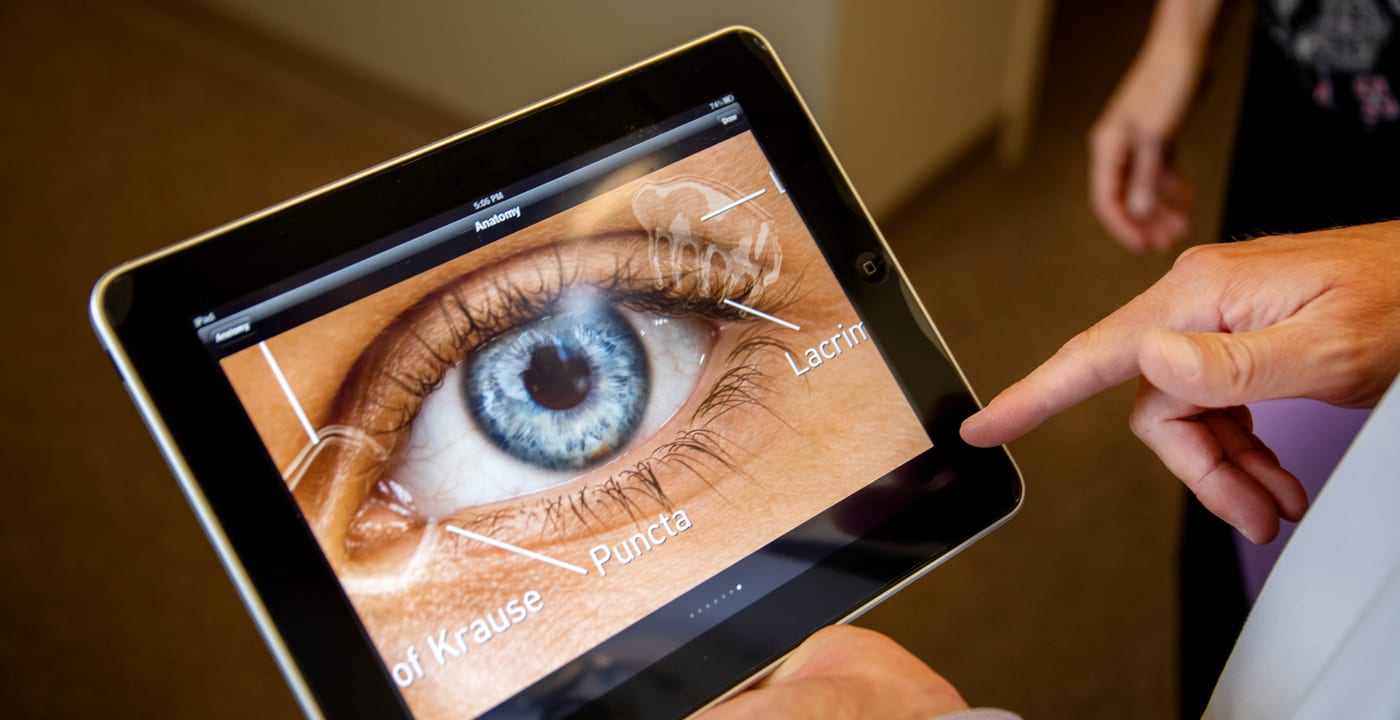In plain sight: How to know if your child has a vision problem

By Melanie Collett
If you’ve spent significant time with young children, you’ve likely observed their enthusiasm to learn. “What’s this?” “What’s that?” and “Why?” echo throughout their days and often linger through bedtime. What may seem like an interruption can be quickly brought into perspective. It’s a joy to see a child learn about and experience new things in the world.
It might surprise you that in the first 12 years of life, approximately 80 percent of all learning is obtained through the eyes. So how can parents and caretakers of young children know if a child has a vision problem? MultiCare Rockwood Clinic optometrist Kenneth Absalonson, OD, shares some simple steps:
Know the signs or behaviors related to vision problems
“If a child is squinting, rubbing their eyes, holding reading material very closely or standing close to the television, they may be having visual symptoms,” Dr. Absalonson explains. “It’s important to note that some conditions like amblyopia, also known as lazy eye, can be asymptomatic because one eye sees well while the other eye is failing to develop correct vision wiring in the brain.”
Make an appointment for a comprehensive eye exam
Partner with their teacher and pediatrician
“Teachers have a great instinct about when someone is struggling visually and they are an important ally in reporting suspected visual problems. Often poor school performance and grades can be greatly improved if a student is having vision problems,” Dr. Absalonson continues. “School screenings and pediatric well-child exams are also a huge asset in picking up on vision problems. Unfortunately, screenings can miss up to 75 percent of children with vision problems — and up to 61 percent of children who fail school screenings never visit an optometrist or ophthalmologist for a comprehensive eye exam.”
Take preventative measures
“Protective eyewear is important,” says Dr. Absalonson. “Eye injuries to children account for approximately 70,000 emergency room visits each year, mostly in teens ages 15 to 17. The majority of these injuries can be prevented by wearing proper protective eyewear. However, it is estimated that only 14.5 percent of children wear eye protection when participating in activities that can cause eye injuries.”
Assess if it’s time to get an eye exam
“The American Optometry Association recommends any child having their first comprehensive eye exam between age 6-12 months, then again by age 3, then again by age 5,” Dr. Absalonson says. “After that annual eye exams are recommended.”
Learn more about the MultiCare Rockwood Clinic Eye Center
The MultiCare Rockwood Clinic Eye Center is home to experienced optometrists and ophthalmologists seeing children and adults at three convenient locations across the Inland Northwest. Make an appointment for a comprehensive eye exam



